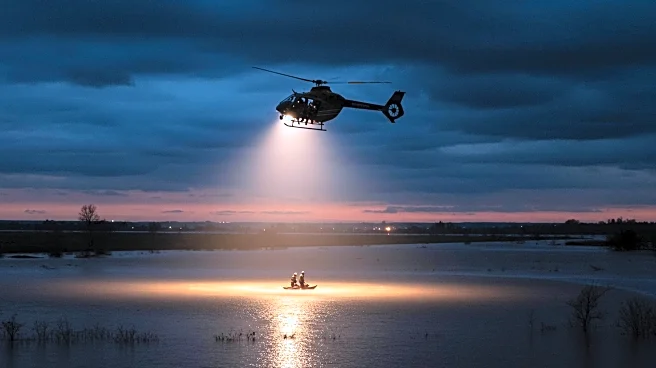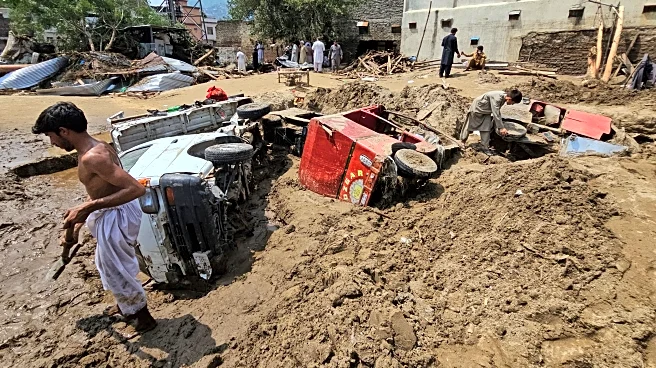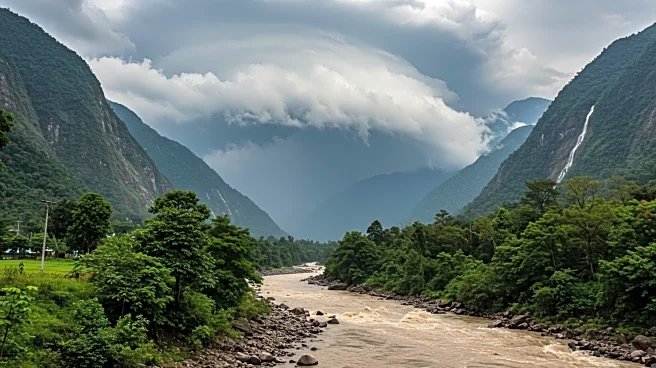What's Happening?
In Pakistan, rescue operations have been intensified following flash floods that resulted in over 220 fatalities in a single district. The floods, triggered by cloudbursts and monsoon rains, have caused significant destruction in Buner, a district in Khyber Pakhtunkhwa province. Emergency services have reopened more than half of the damaged roads, facilitating access to isolated villages. The floods have led to landslides and the collapse of homes, with ongoing efforts to clear debris and search for missing persons. The provincial chief minister has announced financial aid for affected families, while Prime Minister Shehbaz Sharif is overseeing relief operations.
Why It's Important?
The floods in Pakistan underscore the country's vulnerability to climate-induced disasters, particularly during the monsoon season. The high death toll and widespread destruction highlight the urgent need for effective disaster management and climate adaptation strategies. The situation has significant implications for public health, infrastructure, and economic stability in the affected regions. The government's response and international support will be crucial in mitigating the impact and preventing future disasters. The floods also serve as a reminder of the broader challenges posed by climate change in South Asia.
What's Next?
Pakistan's disaster management authority has issued warnings of potential further deluges and landslides, urging local administrations to remain vigilant. The government is expected to continue its relief efforts, focusing on the distribution of aid and the evacuation of stranded individuals. Long-term strategies may involve enhancing infrastructure resilience and improving early warning systems. The international community may also play a role in supporting Pakistan's recovery and adaptation efforts.












